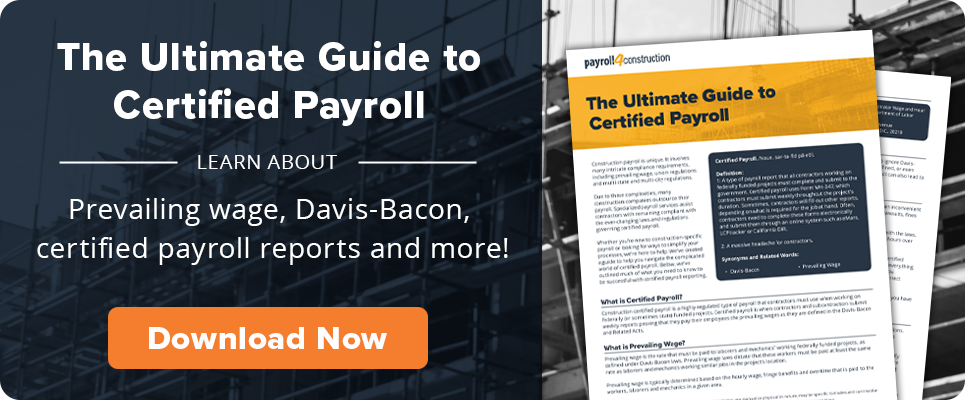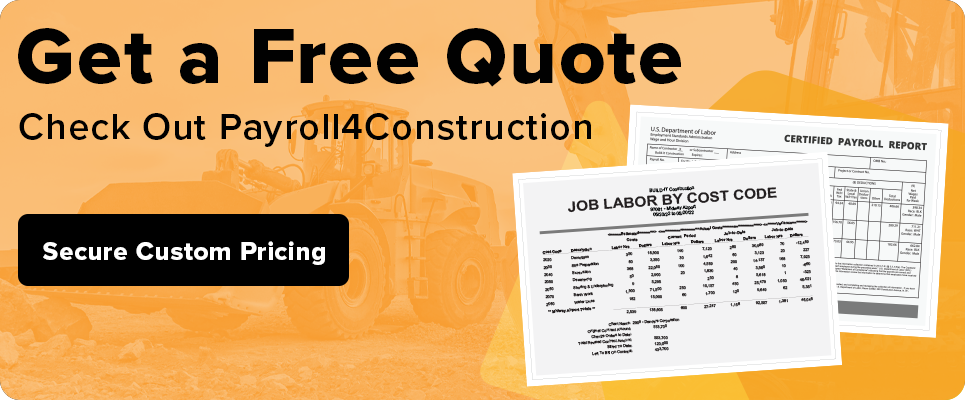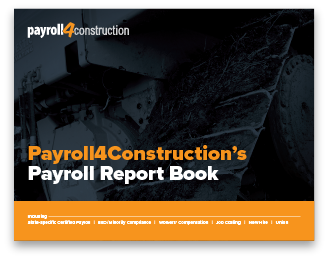
January 15, 2019
Processing payroll is complicated, and adding union requirements to the mix can make the task feel insurmountable. Contractors who work with union employees not only have to worry about tracking benefits packages, health care, vacation time, and 401(k), but they also need to take into account additional deductions or fringes their home union might require — like political action contributions, pensions, and annuity funds. And if they work in other jurisdictions, that might not be the only union they’re paying and reporting to.
In addition to being complex and challenging, union payroll can put a lot at stake for contractors. Incomplete reporting, delinquent payments, and even handing out paychecks late can potentially lead to costly fines, losing contracts, or being kicked out of a union entirely.
However, there are ways to make sure your union payroll reporting is as accurate as it can be:
1. Know your particular union requirements.
The first thing a contractor should do before any project involving a union is to double-check all of the union’s requirements. This can be done by checking in with a local union’s business manager.
When looking into union requirements, you should review:
- the effective dates for payment and dues
- how and when to pay them and
- any rate changes within the union
Some unions may require online submission, whereas others may prefer check deposits. It’s vital to stay on top of payment dates both to the union and to your union employees because, as a contractor, you can be charged for every hour a union worker’s paycheck is late.
You’ll also want to do the same due diligence when working outside of your local’s jurisdiction. When away from your home local, you might be responsible for an entirely different set of wage, fringe and deduction requirements and rates.
2. Understand the difference between deductions and fringes.
While union deductions are taken out of a union employee’s paycheck, fringes are additional money you’ll have to pay either through benefits or cash. Understanding what fringes you owe and what a union requires in deductions is important. However, some union rate tables differentiate them with only a small note, so they have to be studied carefully. If you end up contributing to a vacation fund as a fringe when the union requires it as a member deduction, the union local might not object, but you’ll be paying more than you need to and aren’t likely to get that money back.
At the same time, not every fringe is treated equally by a particular union. Make sure you understand which fringes are subject to overtime rates and which are not. Again, if you underpay as the employer, you’re on the hook, and if you overpay as the employer, you shouldn’t expect a refund check.
3. Job cost your fringe benefits.
If you’re consistently working with union employees and in different union locals, you want to make sure you’re factoring in these additional costs and including them into your bids. In addition to simply tracking these fringe costs to the job, you might also build them into your job cost structure to track labor burden as a separate cost type and be able to report them by each cost area on your projects. Then, when estimating the site prep or foundation on your next project, you can look at the true cost of your labor and make sure you’re getting the right contract amount.
4. Track your union employees’ time accurately.
With so much involved in union worker requirements, you want to ensure that your union workers are working appropriate hours. This means clocking in and clocking out at the right times. In this case, investing in software like mobile time tracking can help simplify the process.
Several features can make this even easier. Being able to include job cost information on your mobile timecards, like what task they were working on for each of those hours, will save you from having to code timesheets later. Electronic timecard routing and approvals can also let superintendents double-check this information when it’s fresh in their minds. Software that can automatically calculate overtime rates for wages and fringes when employees reach their threshold can be another way to help keep compliance in your hands rather than hoping timesheets were filled out correctly.
Streamline Your Union Payroll Processing
In the end, union payroll processing is different per job and contractor, and there’s no universal answer for streamlining the process. But you can limit the stress of reporting by accurately tracking and recording or by going a step further and investing in a construction-specific payroll system that will do it for you.
Share Article
Keep on current news in the construction industry. Subscribe to free eNews!



